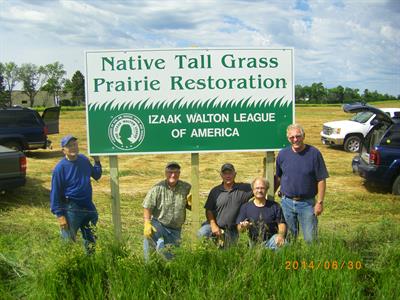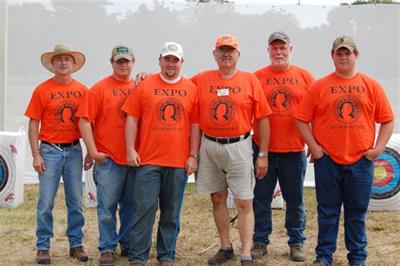 While reading about the early days of the Izaak Walton League in this magazine, I was astounded to learn that the League grew from its 54 founding members in 1922 to 100,000 strong by 1925. Today, we have some 44,000 members and more than 240 chapters across the country. Solid numbers to be sure, but not what they could — or should — be.
While reading about the early days of the Izaak Walton League in this magazine, I was astounded to learn that the League grew from its 54 founding members in 1922 to 100,000 strong by 1925. Today, we have some 44,000 members and more than 240 chapters across the country. Solid numbers to be sure, but not what they could — or should — be.
After all, how many other national organizations promote clean air and water, gun rights, the country’s hunting and fishing heritage, and the overall importance of conservation? The answer is, to the best of my knowledge, none. What’s more, we do not — and will not — affiliate with any political party, preferring to work in a non-partisan, non-confrontational way to accomplish the country’s conservation goals.
This is a very positive message and one that we Ikes need to do a better job of promoting and spreading. There are numerous ways we as individuals and chapters can spread the Ike message.
Reaching Out as Individuals
I regularly give seminars on hunting, fishing, bird watching, and outdoor photography. Over the years, I have made presentations not only to League chapters but also to church camps, scouting groups, school classrooms, outdoor shows, sportsman’s clubs, bird clubs, fishing rodeos, landowner associations, and adult education classes. All of these venues are excellent ones in which to spread the Ike message.
For example, I invited a Cub Scout Troop to tour the 38-acre property where my wife and I live. The Scoutmaster asked if parents and older children could attend, and I readily consented. As we walked along a logging road that I had seeded with a wildlife mix, I explained the benefits to wildlife of edge habitat like this and identified trees, birds, scat, and tracks.
I also talked about the League’s emphasis on such things as protecting riparian zones, conserving wildlife habitat, and the need for us to be good stewards of (to use the League’s motto) “soil, air, woods, waters, and wildlife.” For our culminating activity, I walked the youngsters through a timber stand improvement project. (We cut down some red cedars that were crowding young oaks, which could then bear more acorns for wildlife, and turned those cedar tops and limbs into brush piles to provide cover for songbirds, rabbits, and small mammals.) Afterwards, the parents peppered me with questions, which afforded another opportunity to discourse on Ike values.
Landowner associations afford yet another opportunity for us. For instance, about five or so years ago, a rural landowner group invited me to talk to them about conservation easements. I explained how a landowner can voluntarily put his land under easement and all the positive ways that doing so helps wildlife. This was also another way to show how (again, to paraphrase our motto) Ikes are “defenders” of the wild world.
As a result of my talk, two landowners came up to me afterwards, requested more information on conservation easements, and within a few years, both had placed easements on their properties. Both also offered to let me hunt on their lands, which I have done and even have killed several deer on them — a nice little side benefit of spreading the League’s message.
Reaching Out as Chapters
 Just as we can do a better job promoting the Ike message as individuals, so can chapters collectively. Scott Kovarovics, the League’s Executive Director, agrees.
Just as we can do a better job promoting the Ike message as individuals, so can chapters collectively. Scott Kovarovics, the League’s Executive Director, agrees.
“The good news is that our chapters are out in the field doing an incredible range of conservation and outdoor recreation projects,” he says. “The bad news is that not enough people know about those accomplishments. Every day, our chapters are conducting hunter education and gun safety classes, introducing kids to fishing, mentoring young hunters, and all kinds of activities connecting kids and their parents to the outdoors. Other activities range from litter clean-ups along countless roads to major projects such as habitat improvement, reforestation efforts, and stream monitoring. We have incredibly dedicated chapters that have monitored streams for decades.”
Unfortunately, many of these good works go unnoticed by the general public — the folks who often would join the League if they knew what we do. Kovarovics believes that chapters should use both old media (local newspapers, television stations, and radio stations) and new media (Facebook, Twitter, and Web sites) to inform the public about League accomplishments. Telling the story locally is also important for highlighting the conservation impact the League has at a broader regional and even national level.
“On the national level, our goal is to stitch together the great local projects to demonstrate the broader impact the League is having on conservation,” Kovarovics continues. “It’s the individuals and chapters out in the field that do the hard and necessary day-to-day work. Knowing more about these efforts at the national level is critical to telling this story, demonstrating the results being achieved on the ground. These are the facts that are compelling to policy makers, the media, and potential funders.”
Our first national president, Will Dilg, was said to travel the country “with almost evangelical zeal to recruit people to the League.” I’m not sure if I can generate evangelical-style enthusiasm, but we all can do a better job of not hiding our proverbial lights under a bushel — we should put them on a lampstand to give light to everyone in our community.